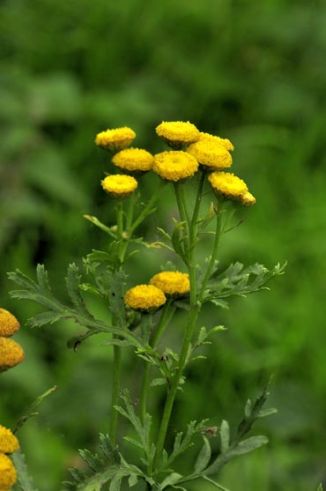Tall, aromatic, graceful, this in an upright perennial which graces our hedgerows and grass verges. Reaching over 1 metre high, it bears little bright yellow button-like flowerheads in clusters on its stiff, woody stems. These flowers (7-12mm across) are composed of disc florets only and appear in flat-topped umbel-like corymbs in large numbers. They bloom from July to September. The alternate fernlike leaves are unstalked and pinnately divided into deep, toothed lobes. This is not a native plant and it belongs to the Asteraceae family.
I first recorded this plant growing in Co Wicklow in 1976 and I photographed it in Enniscorthy, Co Wexford in 2009.
If you are satisfied you have correctly identified this plant, please submit your sighting to the National Biodiversity Data Centre
Tansy has been put to many uses over the centuries. 17th century apothecary and herbalist, Nicholas Culpeper, wrote: 'Let those women that desire children love this herb, it is their best companion, their husbands excepted.' He also said: 'The herb fried with eggs (as it is the custom in the Spring-time) which is called a Tansy, helps to digest and carry downward those bad humours that trouble the stomach.'
Tansy was used as a flavouring for Drisheen (a type of meat dish such as black pudding). It was more commonly found near to habitation and is thought to be a garden escape. Nathaniel Colgan wrote in his 'Flora of the County Dublin' (1904) 'Always occurs in the neighbourhood of habitations or ruins: an obvious introduction, but long persistent and fully established in many of its stations.' Tansy was also known as Lus na bhfrancach.




